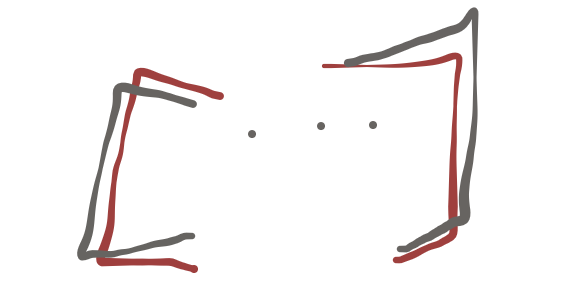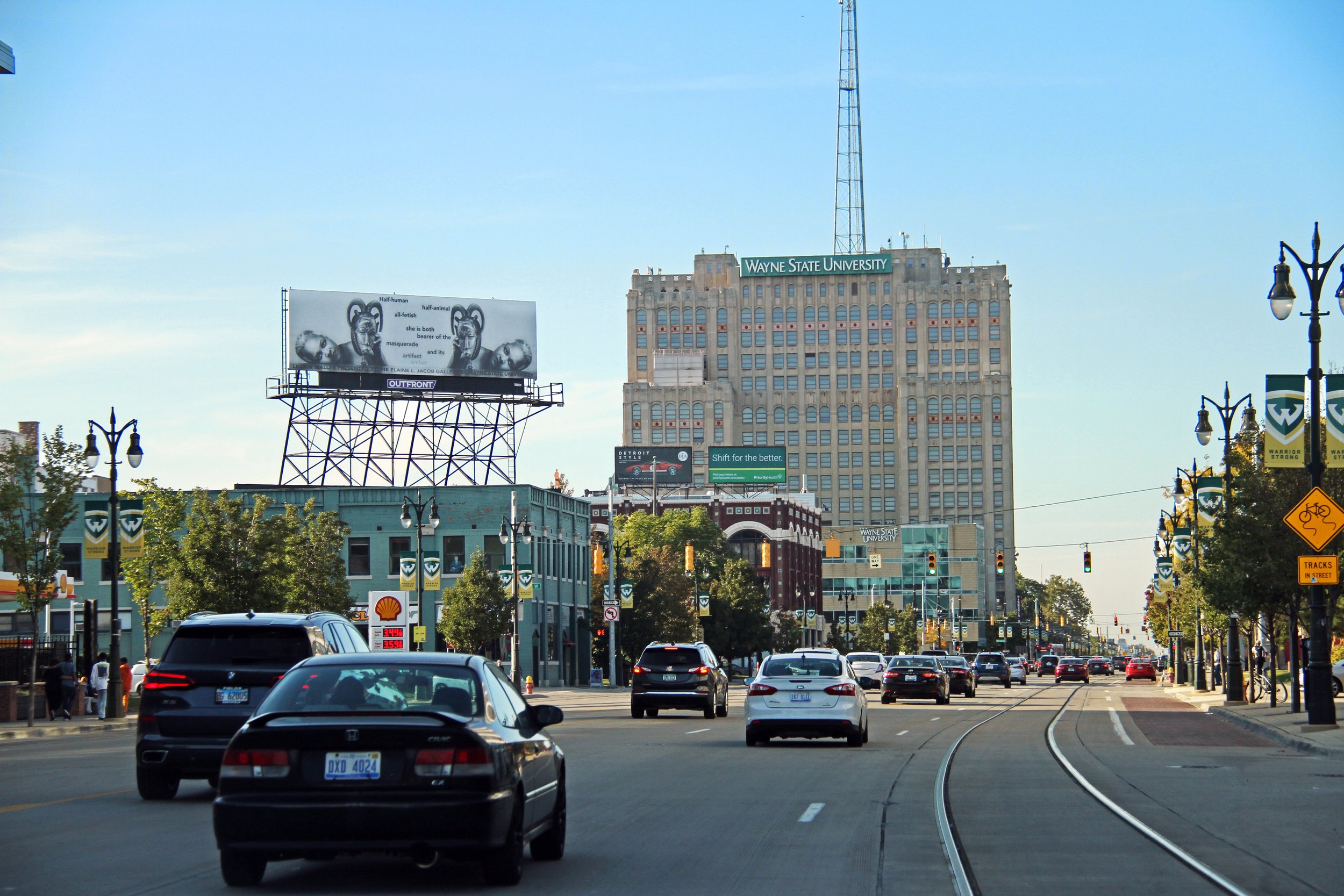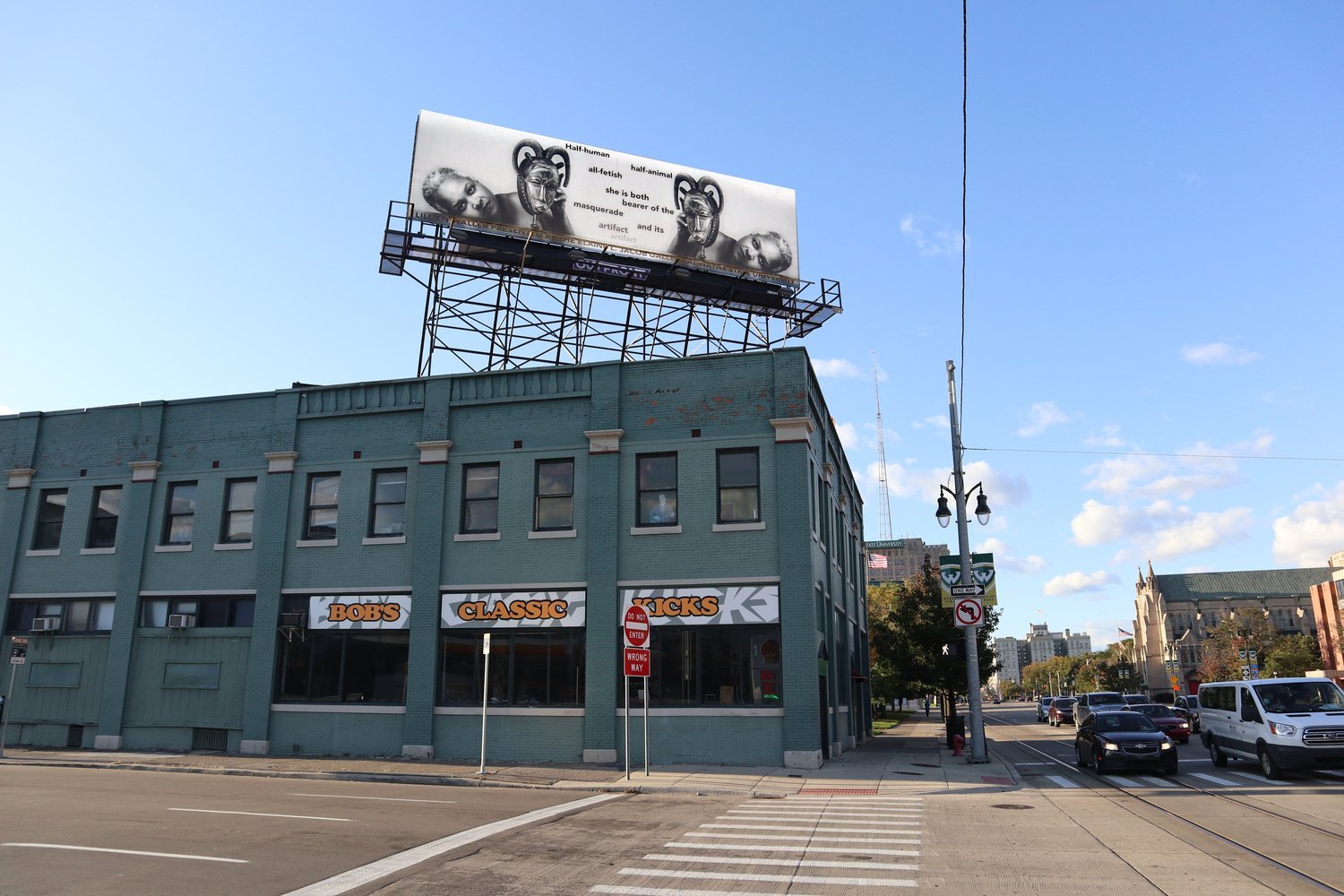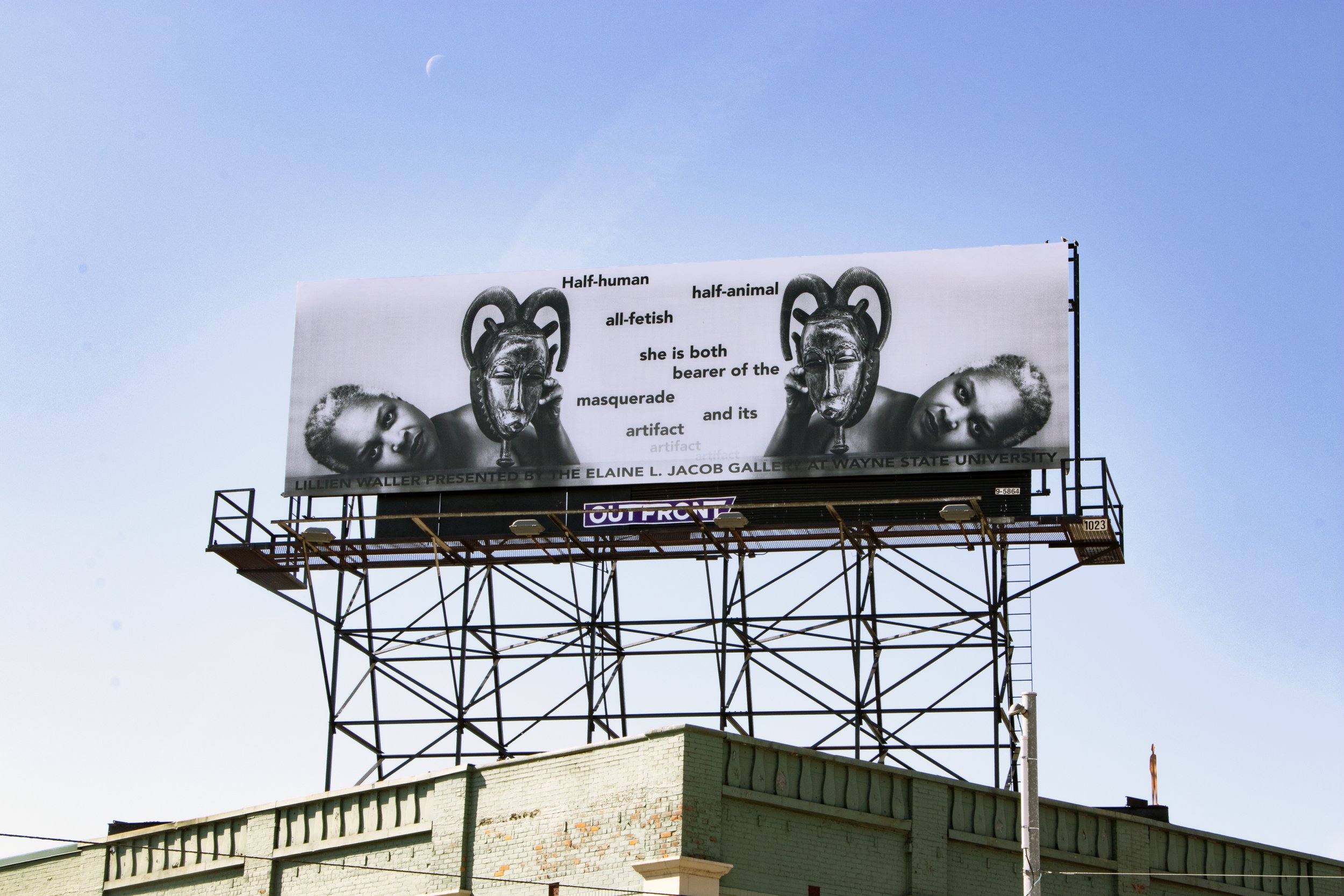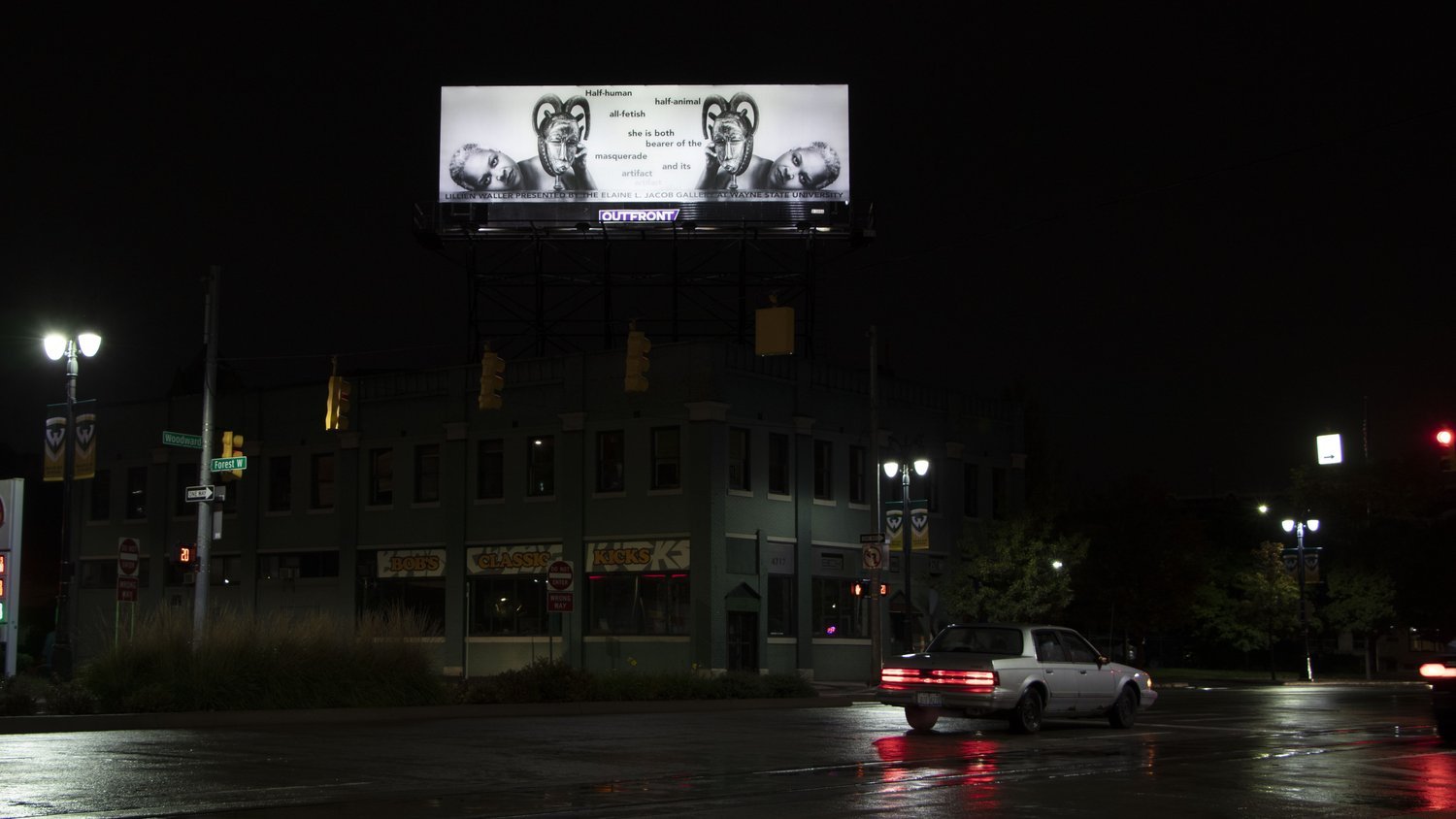“Face, Off (Noire et Blanche),” 2021, vinyl, 14’ x 48’. Billboard installation at 4717 Woodward Avenue for In The Air II: Voices from Detroit and Beyond, September 28–October 15. Concept + Text by Lillien Waller. Photography by Valaurian Waller.
Noir et Blanche by Man Ray, 1926, gelatin silver print, 6 7/8 x 8¼ in. (17.5 x 21cm.). This photograph was published in the May 1926 issue of French Vogue accompanied by the description “Mother of Pearl Face and Ebony Mask.” via Wiki Commons
|Face, off: becoming an object
In 1926, Man Ray created the photograph “Noire et Blanche” featuring model Kiki of Montparnasse and an ebony Baule mask from the Ivory Coast. When people talk about this photograph, they typically focus on its formal qualities. The image puns its title in two directions: the black-and-white film used to create it and the subject(s) contained within the tableau. The photograph shows Kiki, whose head is situated in a horizontal position on a flat table- or shelf-like surface. Her dark hair is pulled back, her eyes are shut, as is her mouth, painted in what we assume to be a rouge lipstick. With her left hand, and one or two inches from her own head, she balances the Baule mask.
Kiki’s presence is not meant simply to oppose the mask (such as black vs. white) so much as it is meant to articulate a grammar of likeness: see how mask-like this white face is / can be, how exotic. “Noire et Blanche” also poses larger questions regarding, during this period, the aestheticization of so-called tribal (primitive) artifacts. The Otherness of the primitive and the sexual Otherness of women become conflated as both are objectified in “Noire et Blanche.” Kiki’s eroticism stems from her lack of wholeness—she is lent, via proximity and formal resemblance, a quality of exoticism from the mask.
When you decontextualize cultural artifacts, you can “rewrite” them in any way you like. It is that decontextualized quality that captures me every time I look at Man Ray’s photo because of the inherent performance of an exoticized “object.” What would happen, I wondered, if I applied this scene to the experience of Black women in America—applied it to my own experience?
The Man Ray photo gave me the chance to play with these ideas of juxtaposition and contrast but also introduce a real-life, racialized human experience into the conversation and convey the one thing this photo could not represent: disappearance.
The Black female body is a fraught historical object, on the one hand sexualized and desired and on the other hand derided and ridiculed. This mask that we wear, that I wear, is part of a performance that while it may make some white people more comfortable with our presence, makes us smaller. As a Black woman, you learn from a very young age: don’t talk too loudly or people will think you’re angry, don’t challenge others—particularly white men—because you will be perceived as combative.
The work I created, “Face, Off (Noire et Blanche),” re-enacts, and riffs on, the Man Ray photo but is ultimately about me (a self-portrait of sorts): the mask I wear, the struggle to reject it.
Exhibition Dates: September 28 through October 15, 2021
Billboard Location: 4717 Woodward Ave, Detroit, MI, 48201
Kresge Artist Lecture: October 6, 2021 at 6:00 pm, online
The Wayne State University James Pearson Duffy Department of Art and Art History presents In The Air II: Voices from Detroit and Beyond, September 2021 through April 2022. The series, curated by Tyanna Buie, includes works created by local and national artists featured on a billboard, located at the corner of Woodward and E. Forest, Detroit. A total of seven solo presentations, each one month in duration, will be on view from September 2021 through April 2022.
The exhibition series includes works by the following artists: Nour Ballout, Lancer Casem, Nandi Comer, Philip Crawford, Jamal Currie, Kim Miller, and Lillien Waller.
All installation photos courtesy Wayne State Galleries.
